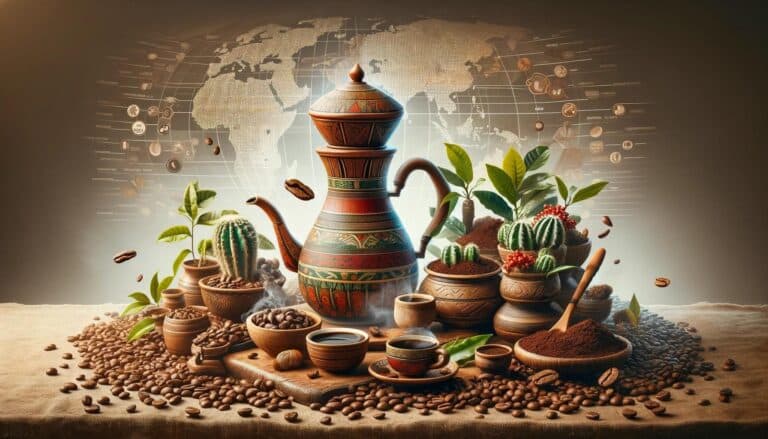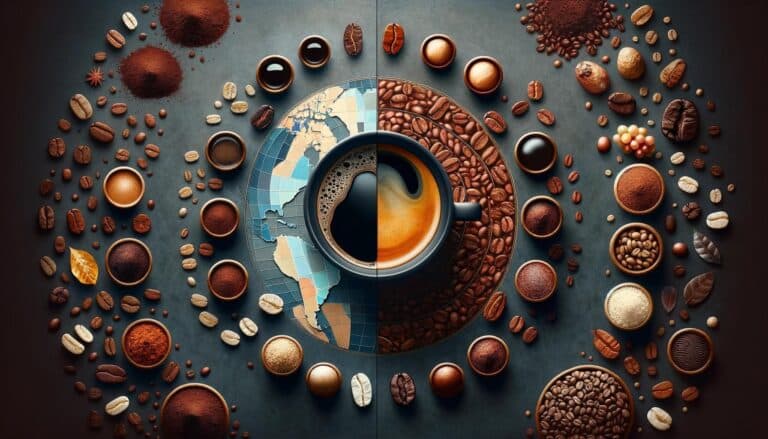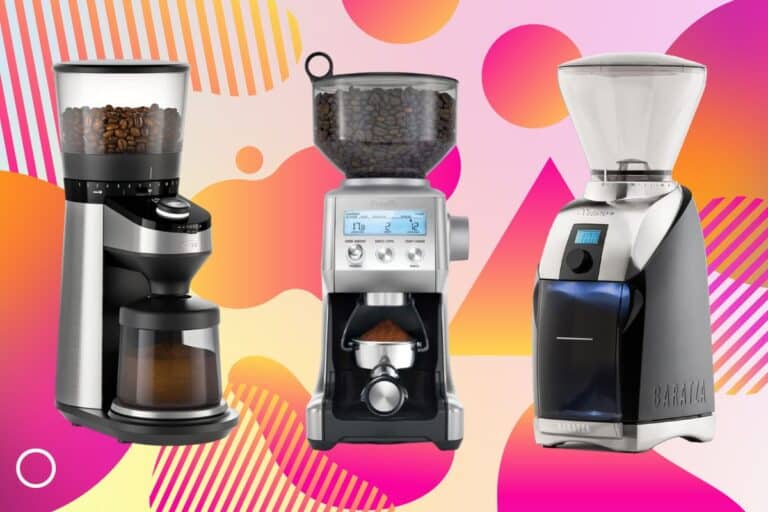Espresso is more than just a coffee drink; it’s an art form steeped in tradition and an integral part of coffee culture worldwide. Originating in Italy at the turn of the 20th century, espresso is crafted by forcing a small amount of nearly boiling water through finely-ground coffee beans, resulting in a concentrated beverage that is rich in flavors and aromas. This method highlights the coffee’s deep, complex characteristics, making espresso the foundation of various popular coffee drinks like lattes, cappuccinos, and Americanos.
What is a doppio espresso?
A doppio espresso is a double shot of espresso, consisting of about 60 ml (2 ounces) of coffee. It uses twice the amount of coffee grounds and water as a single shot, providing a stronger flavor and more caffeine.
Among the many espresso-based drinks, the “doppio espresso” stands out as a favorite choice for coffee enthusiasts seeking a more intense experience. The term “doppio,” meaning “double” in Italian, refers to a double shot of espresso served in a single cup. This serves as an extended pleasure of espresso, offering a deeper insight into the coffee’s flavor profile and providing a robust energy boost. The doppio espresso not only offers a stronger taste but also reflects a culture of coffee appreciation, where quality often supersedes quantity. In this article, we will delve deeper into what makes a doppio espresso, exploring its brewing process, cultural significance, and the unique place it holds in the hearts of coffee lovers around the world.
Understanding Espresso
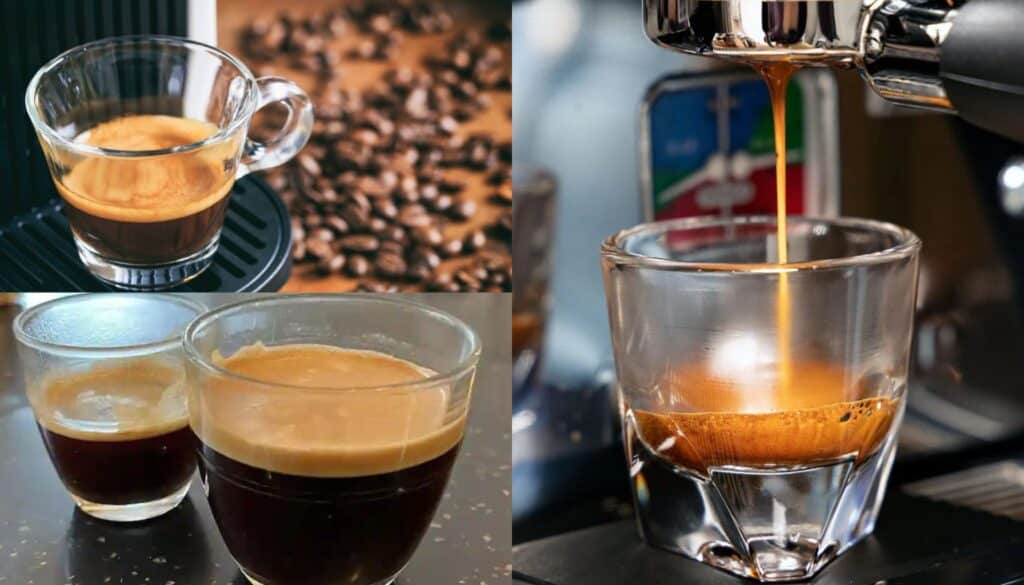
Origins of Espresso
Historical Background of Espresso in Italy
Espresso, as we know it today, emerged from Italy’s rich coffee culture in the early 20th century. Its invention is credited to Luigi Bezzera, who in 1901 designed and built the first espresso machine, seeking a method to shorten the coffee brewing time for his employees. The machine was later perfected by Desiderio Pavoni, who commercialized it. This innovation was driven by the Italian pursuit of efficiency and the desire to serve coffee freshly brewed at a moment’s notice. The name “espresso,” derived from the Italian word for “express,” signifies this speedy delivery of coffee under pressure, tailored specifically to the customer’s order.
Evolution of Espresso Machines and Brewing Techniques
Over the years, espresso machines have undergone significant improvements to enhance their efficiency and reliability. From the steam-driven models of the early 20th century to the sophisticated, electronically controlled machines of today, each advancement has aimed to better extract the coffee’s flavor and aroma. The evolution of espresso machines has also been influenced by technological advancements, including the introduction of pumps to provide consistent water pressure and innovations in temperature control to ensure optimal extraction. These developments have helped to standardize espresso quality, making it a staple in coffee cultures worldwide.
Basics of Espresso
Definition and Characteristics of Espresso
Espresso is defined as a concentrated coffee beverage brewed by forcing hot water under pressure through finely-ground coffee. This process results in a thick, creamy coffee that is higher in dissolved solids than regular coffee. Notable for its rich flavor and creamy texture, espresso is characterized by its bold, robust taste and a layer of crema on top—a golden, creamy foam that forms when air bubbles mix with the soluble oils of finely-ground coffee.
Key Elements: Coffee Beans, Grind Size, and Water Pressure
- Coffee Beans: The choice of coffee beans affects the taste, acidity, and body of the espresso. Typically, a blend of beans is used to achieve a balance of flavors, though single-origin beans are also popular for those seeking a specific taste profile.
- Grind Size: The grind size for espresso is typically much finer than that of regular coffee. This fine grind allows for the optimal extraction of flavor when water is forced through under high pressure.
- Water Pressure: The pressure used to brew espresso is critical to its quality. Modern espresso machines use between 9 and 15 bars of pressure to extract the coffee, which is essential for producing the characteristic crema and delivering the intense flavor and body associated with a good espresso.
Understanding these fundamentals not only enhances one’s appreciation of espresso but also lays the groundwork for exploring more complex variations, such as the doppio espresso.
What is a Doppio Espresso?
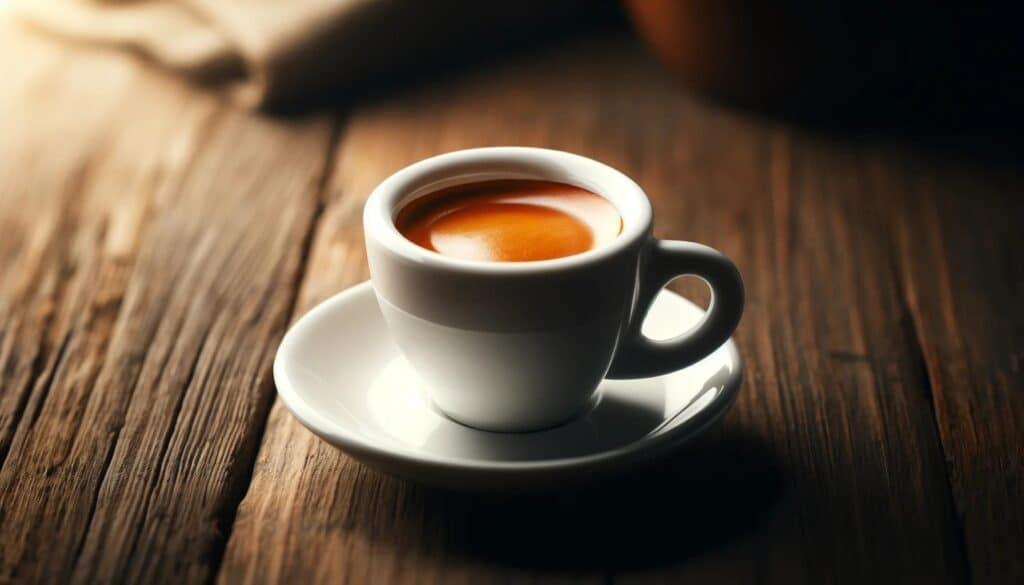
Definition of Doppio
“Doppio” is an Italian term that translates to “double” in English, aptly describing what a doppio espresso is: a double shot of espresso. This involves using twice the amount of coffee grounds and water to brew a larger volume of espresso, typically around 60 ml (2 ounces), which is served in a single cup. The doppio espresso offers a more intense flavor and caffeine content compared to a standard single shot, making it a popular choice for coffee enthusiasts looking for a stronger coffee experience.
Doppio Espresso vs. Single Shot Espresso
The key difference between a doppio espresso and a single shot of espresso lies in the quantity of coffee and water used, as well as the resulting flavor profile and caffeine level. While a single shot of espresso typically uses about 7 grams of coffee to produce about 30 ml of espresso, a doppio uses approximately 14 to 18 grams to double the output without altering the extraction time. This results in a beverage that maintains the rich and concentrated characteristics of an espresso but with greater volume, strength, and complexity.
Brewing a Doppio Espresso
Equipment Used to Make a Doppio Espresso
To brew a doppio espresso, the essential equipment includes:
- An espresso machine with the capability to handle higher quantities of coffee and water.
- A portafilter designed for double shots.
- A coffee grinder capable of producing a very fine, consistent grind.
- A tamper to evenly compress the coffee grounds in the portafilter.
Step-by-Step Brewing Process
- Grind the Coffee: Start with fresh coffee beans and grind them to a fine consistency, suitable for espresso.
- Measure the Coffee: Weigh approximately 14 to 18 grams of coffee grounds to ensure the right ratio for a doppio.
- Prepare the Portafilter: Distribute the coffee grounds evenly in the portafilter. Use a tamper to press the grounds firmly and evenly. This is crucial for achieving an even extraction.
- Brew the Espresso: Insert the portafilter into the espresso machine and start the brew cycle. The water should pass through the coffee at a pressure typically between 9 and 15 bars. The extraction should take about 25 to 30 seconds.
- Serve Immediately: Serve the doppio espresso as soon as it’s brewed to enjoy its full aroma and flavor.
Importance of Timing and Measurements
The quality of a doppio espresso heavily relies on precise timing and accurate measurements. The grind size, amount of coffee, tamping pressure, water temperature, and extraction time are all critical factors that need to be carefully controlled. Proper timing ensures that the espresso is not under-extracted (weak and watery) or over-extracted (bitter and harsh), but perfectly balanced.
By understanding these elements, anyone can master the art of making a doppio espresso, enjoying a richer and more fulfilling espresso experience.
Cultural Significance
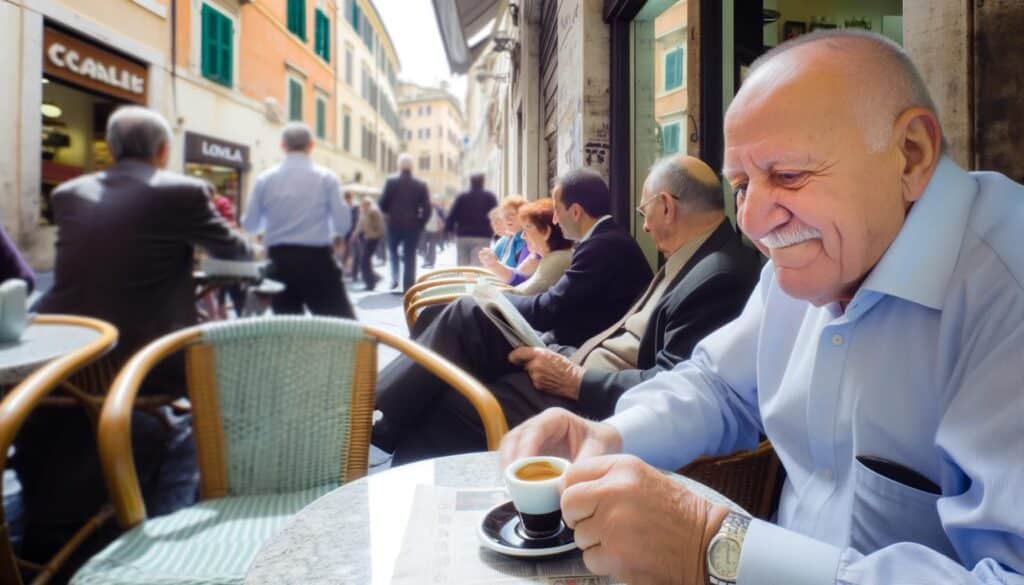
Doppio Espresso in Italian Culture
Role in Daily Life and Social Settings
In Italy, coffee, particularly espresso, is more than just a drink—it’s a cornerstone of social life and daily routine. The doppio espresso, with its robust flavor and heightened caffeine content, is particularly favored by those needing a vigorous start to their day or a mid-afternoon boost. Coffee in Italy is typically enjoyed standing at the bar, engaging in brief, lively interactions with friends or colleagues. This ritual is not just about drinking coffee; it’s a momentary pause to refresh the mind and socialize.
Comparison with Other Coffee Cultures
Italian coffee culture differs significantly from that in other parts of the world, such as the United States, where coffee is often consumed on the go, in large cups, and with various flavors and additives. In contrast, Italian coffee is usually consumed quickly at the counter and is appreciated for its natural flavors derived from high-quality beans and brewing techniques. The focus is on the quality of the coffee rather than the size or variety of additives, which marks a distinct cultural appreciation for espresso.
Global Popularity
Adoption in Coffee Shops Around the World
The doppio espresso has gained immense popularity worldwide, becoming a staple in coffee shops from Europe to North America and Asia. Its preparation has been adapted in various locales to cater to local tastes and preferences, but the essence of a doppio espresso remains consistent—a strong, concentrated coffee that delivers a quick, intense experience.
Variations and Adaptations in Different Countries
Globally, the doppio espresso serves as a base for a variety of popular coffee drinks. For example, in America, it is often used in large, milk-based drinks like lattes and cappuccinos, which cater to local preferences for less intense coffee flavors and larger serving sizes. In Scandinavian countries, known for their high coffee consumption, the doppio espresso is enjoyed for its strong flavor and effectiveness, reflecting a preference for purity and intensity in coffee. Each adaptation reflects local cultural nuances and demonstrates the versatility and global appeal of the doppio espresso.
The doppio espresso’s integration into various cultures highlights not only its adaptability but also the universal appeal of a good, strong coffee. As it continues to be embraced by different cultures, the doppio espresso remains a testament to the rich, enduring legacy of Italian coffee culture and its global influence.
Health and Consumption

Caffeine Content
Comparison of Caffeine Levels in Doppio Espresso vs. Other Coffee Drinks
A doppio espresso, comprising two standard shots of espresso, typically contains about 120 to 140 milligrams of caffeine. This is roughly equivalent to the caffeine content in a standard 12-ounce American drip coffee, which can vary but generally falls within the same range. However, the caffeine in a doppio is concentrated in a much smaller volume, delivering a quicker and more intense effect. This makes it a preferred choice for those seeking a rapid boost of energy.
Health Implications of Consuming Doppio Espresso
While moderate caffeine intake can improve focus and energy, excessive consumption can lead to health issues such as insomnia, nervousness, restlessness, stomach irritation, rapid heart rate, and muscle tremors. The concentrated nature of doppio espresso makes it particularly potent, and thus it should be consumed with caution, especially among those sensitive to caffeine or with certain health conditions like heart disease or anxiety disorders.
Consumption Tips
Best Times to Consume Doppio Espresso
The best time to consume a doppio espresso is typically in the morning or early afternoon. These are the times when the body’s cortisol levels naturally dip, making the caffeine’s stimulating effects most beneficial and less likely to interfere with the natural circadian rhythms. Consuming espresso late in the day can disrupt sleep patterns and may lead to sleeplessness.
Advice on Balancing Flavor and Health
- Moderation is Key: Given its high caffeine content, limiting doppio espresso consumption to one or two servings per day can help prevent negative side effects.
- Consider Personal Tolerance: Individuals with a lower tolerance for caffeine should consider smaller doses or opt for a single espresso shot instead.
- Pair with Water: Drinking a glass of water alongside or after your espresso can help hydrate the body as caffeine has a diuretic effect.
- Avoid Added Sugars: To fully appreciate the robust flavors of a doppio espresso and maintain a healthy diet, avoid adding excessive sugar or high-calorie creamers. Opting for natural sweeteners or small amounts of milk can enhance the flavor without substantially altering the nutritional content.
By following these guidelines, coffee enthusiasts can enjoy the rich, invigorating qualities of doppio espresso while maintaining a healthy balance in their daily caffeine consumption.
Conclusion

A doppio espresso, meaning “double espresso” in Italian, is essentially a double shot of espresso, combining two standard shots into one robust and invigorating beverage. This coffee preparation stands out for its intense flavor and concentrated caffeine content, making it a favored choice for those who appreciate a stronger and fuller coffee experience. A doppio provides a deep dive into the rich complexities of espresso, offering a quick, powerful boost of energy and alertness.
The cultural significance of doppio espresso extends far beyond its Italian origins. In Italy, it is a staple of coffee culture, savored in social settings and integrated into daily routines, representing a moment of pleasure and rejuvenation. Globally, the doppio espresso has been embraced and adapted by diverse cultures, underscoring its versatility and universal appeal. It serves as a foundation for various popular coffee drinks around the world, adapted to local tastes while maintaining its essence as a potent, espresso-based drink.
The global adoption of the doppio espresso highlights the remarkable influence of Italian coffee culture across continents, shaping how coffee is enjoyed worldwide. It has spurred innovations in coffee brewing and consumption, and continues to inspire a shared appreciation for quality coffee. The doppio espresso not only reflects the evolution of global coffee trends but also celebrates the enduring tradition and craftsmanship of espresso making. As it remains a beloved part of coffee menus around the world, the doppio espresso symbolizes a bridge between tradition and modernity, proving that even the simplest of pleasures can have a profound and lasting impact.
Frequently Asked Questions about Doppio Espresso
What is a doppio espresso?
A doppio espresso is a double shot of espresso, consisting of about 60 ml (2 ounces) of coffee. It uses twice the amount of coffee grounds and water as a single shot, providing a stronger flavor and more caffeine.
How much caffeine is in a doppio espresso?
A doppio espresso typically contains between 120 to 140 milligrams of caffeine, making it comparable in caffeine content to a standard 12-ounce drip coffee but concentrated in a smaller volume.
Is doppio espresso stronger than regular coffee?
Yes, a doppio espresso is stronger than a regular coffee in terms of flavor concentration and caffeine density per ounce. However, the total caffeine content may be similar to a full cup of regular brewed coffee.
How do you make a doppio espresso?
To make a doppio espresso, you need to grind approximately 14 to 18 grams of coffee into a fine consistency, evenly distribute and tamp it into a double-shot portafilter, and brew it using an espresso machine with water at high pressure (about 9 to 15 bars) for 25 to 30 seconds.
When is the best time to drink a doppio espresso?
The best time to drink a doppio espresso is in the morning or early afternoon to make the most of its energizing effects without interfering with your sleep cycle.
Can drinking doppio espresso have health implications?
While moderate consumption of doppio espresso can be part of a healthy diet, excessive intake may lead to caffeine-related side effects such as insomnia, nervousness, and increased heart rate. It’s recommended to consume it in moderation, especially if you are sensitive to caffeine.
What are some tips for enjoying a doppio espresso?
To fully enjoy a doppio espresso, drink it freshly brewed, consider pairing it with water to stay hydrated, and avoid adding too much sugar or cream to appreciate its rich, intense flavors. Moderation is key to enjoying its benefits without adverse effects.

